Routinely taking your horse’s temperature is one of the best ways to monitor his health and catch minor problems before they turn into serious ones. An unexpected temperature rise might be the first sign of an illness or injury. It can also alert you to conditions that are causing your horse to overheat. For example, a strenuous ride on an unseasonably warm winter day might be more challenging for an unclipped horse than you realize, causing his temperature to rise into an unsafe range.
I recommend taking your horse’s resting temperature in the morning and evening every day. This way you’ll get an idea of his baseline. Most horses’ resting temperatures are between about 99 and 100 degrees F, but they can vary depending on several factors, including the weather, time of day and last meal. So make note of your horse’s readings for several days until you identify a typical range for him. Hang a dry-erase board near his stall for recording these readings, as well as his resting pulse and respiration.
Checking temperatures so frequently might sound like a hassle, but with a little practice you’ll find that it takes only a few minutes out of your day and is one of the simplest things you can do to guarantee your horse’s well-being. Knowing his baseline can also help you track his fitness. Horses’ temperatures typically rise several degrees during exercise, especially on warm days. They usually drop again within 20 to 30 minutes after exercise. To monitor how quickly your horse recovers, take his temperature immediately after untacking him. If it’s not back to normal yet, continue cooling him out (walking, bathing, standing him in the shade or in front of a fan, etc.), retaking the temperature every 10 minutes or so. If his temperature reaches 105 degrees or higher or doesn’t return to normal within about 45 minutes of ceasing exercise, call your veterinarian.
Most horses are very cooperative about having their temperatures taken once you’ve done it a few times. Some even learn to move their tails out of the way for you when you initiate the process. If you’ve never done it before and don’t know how your horse will react, ask your veterinarian or another experienced horseperson to help you the first time.
When you purchase thermometers, look for “veterinary,” “livestock” or “equine” ones designed specifically to be used rectally. Even if you plan to use a digital thermometer, buy a traditional analog thermometer as well and familiarize yourself with it, in case the digital one fails. If you have multiple horses, buy one digital thermometer and one back-up analog thermometer for each horse. That way you don’t need to sterilize the thermometer after each use. Store the thermometers in a safe, horse-proof container (such as your grooming kit) where you can easily access them from the horse’s stall or grooming stall.
Until you know your horse is comfortable with the process, ask a friend to hold him while you take his temperature. Tying or cross-tying might cause him to panic if he gets scared.
What You’ll Need:
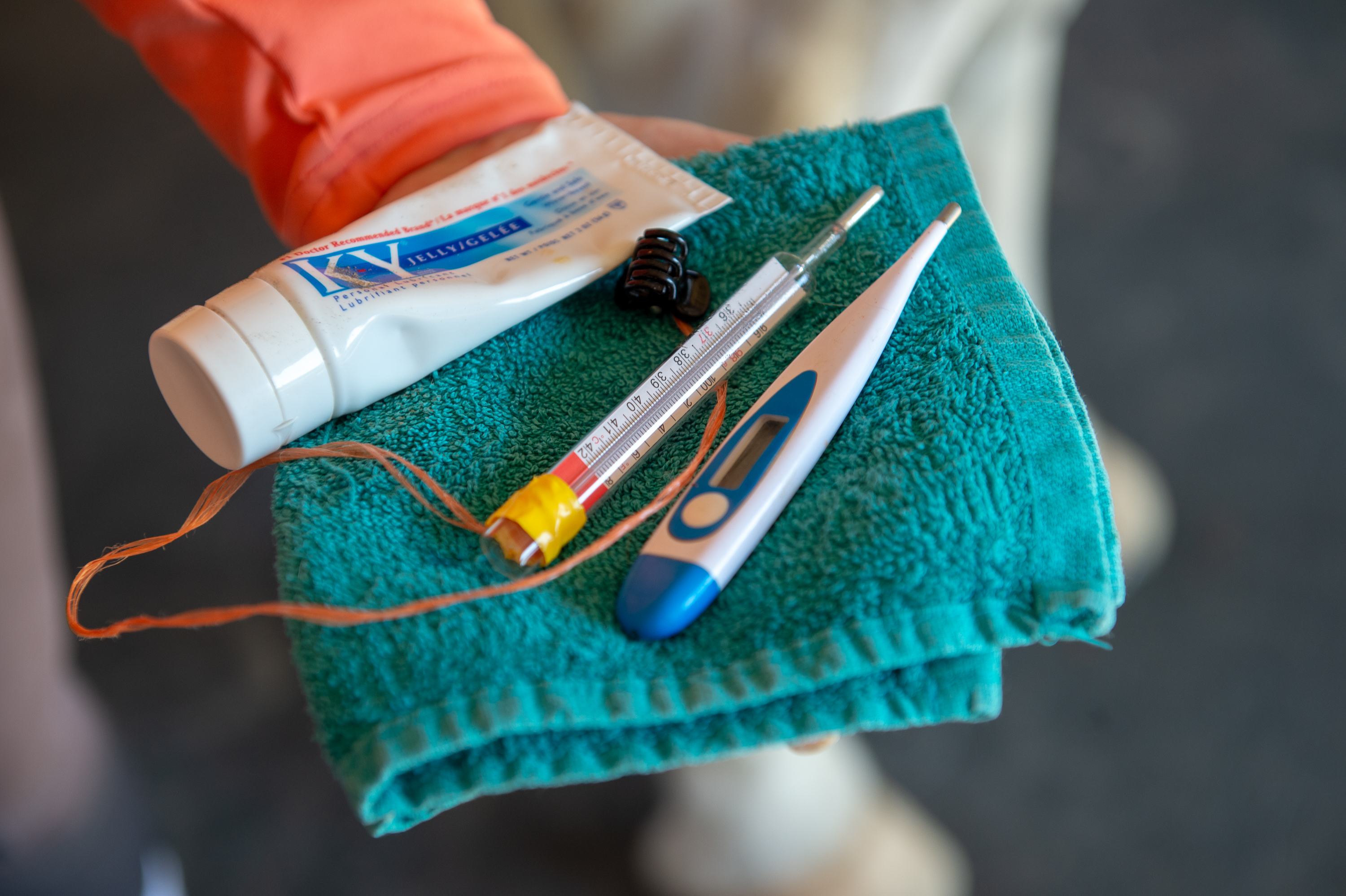
1. Digital rectal thermometer
2. Analog rectal thermometer with a string securely attached to its end (with electrical tape, for example)
3. A hair clip securely knotted onto the other end of the string
4. K-Y™ Jelly
5. Clean rag/washcloth
6. Dry-erase board for tracking vital signs
7A watch or clock (not shown)
How To Take His Temperature
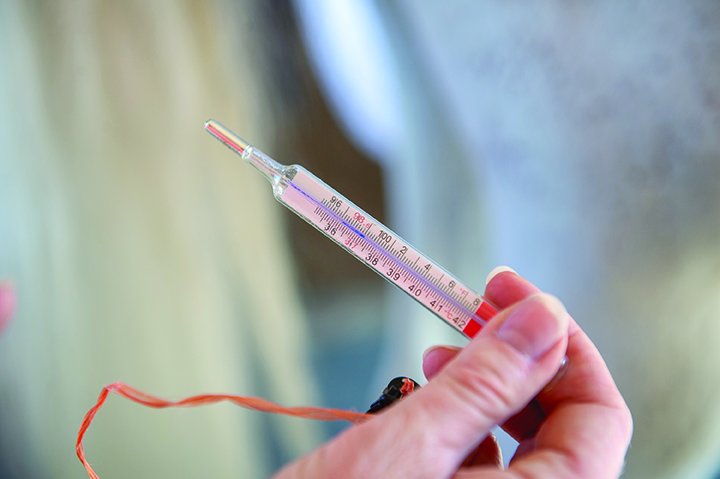
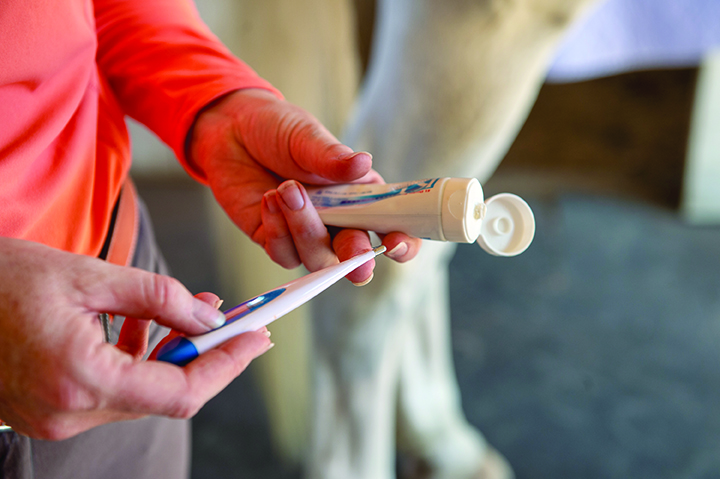
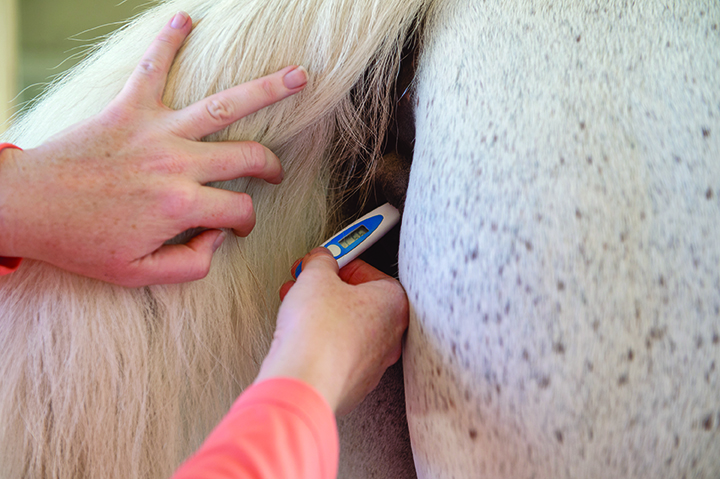
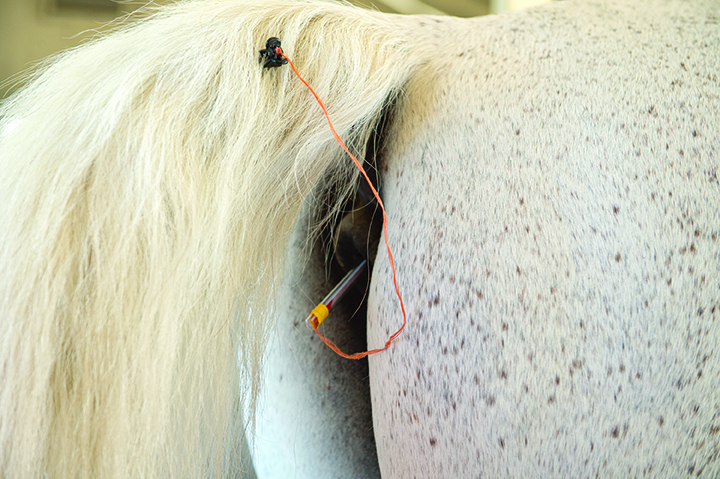
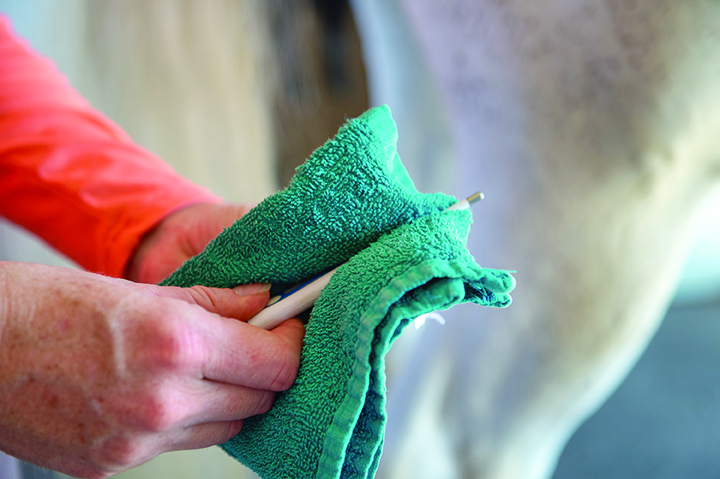
5. Wipe the thermometer clean with the cloth. © Amy K. Dragoo
Desensitizing Touchy Horses
If your horse is sensitive about having his temperature taken (for example, if he steps away from you or clamps his tail down), spend several sessions getting him accustomed to being touched in the area first.
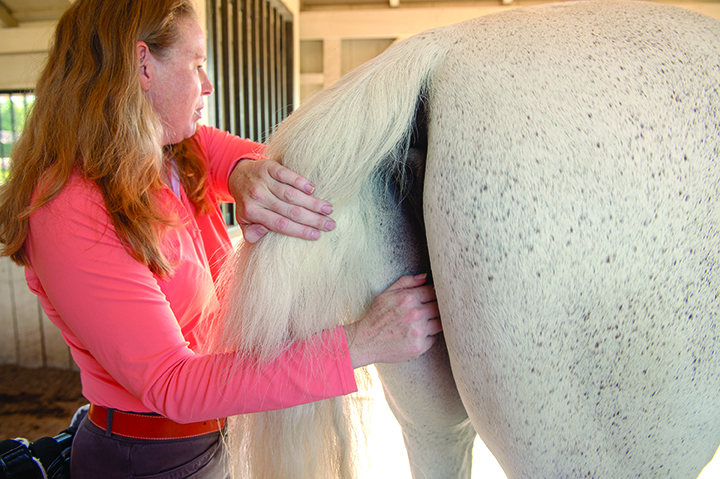
1. Standing safely to the side, start by stroking his rump around the tail area. Then, keeping an eye on his head to gauge his reaction, touch him between his butt “cheeks,” several inches below his rectum. If he raises his head in alarm or pins his ears backward, go back to stroking his rump. © Amy K. Dragoo
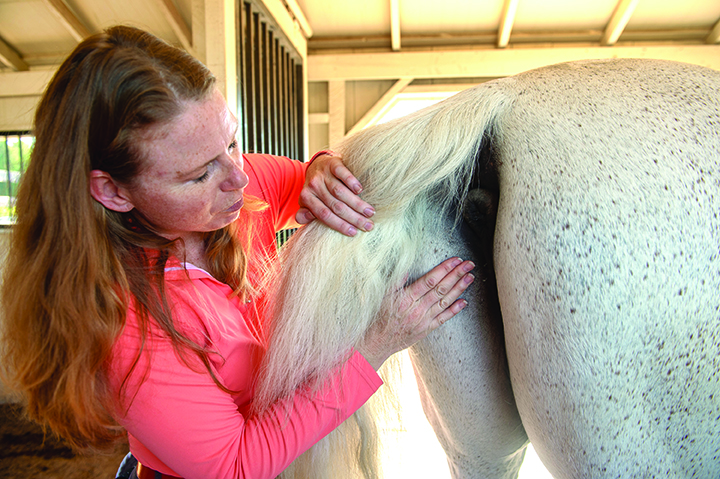
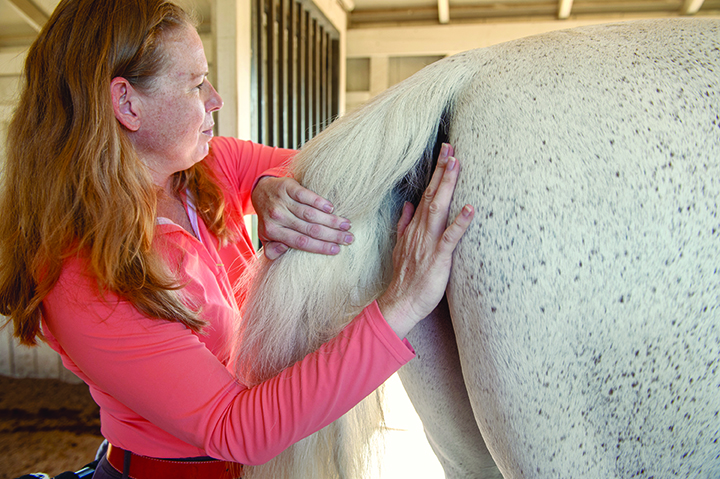
Liv Gude spent years in the saddle riding hunters, jumpers, reiners and, ultimately, dressage horses. Then she switched her focus to growing her expertise as a professional groom. She started her grooming career with Olympian Guenter Seidel. She believes that first and foremost, the duties of a groom are threefold. They are daily care, early detection of illness and lameness and overall health and presentation.
After grooming for years, Gude saw the need to bring professional grooms and horse owners together. She wanted to do this in a supportive and educational manner. In 2011, she founded ProEquineGrooms.com, an online resource that provides information about grooming, employment and horse care. In addition to the website, Gude hosts a recurring podcast of the same name about horse care and grooming.
Original: Spring 2019










